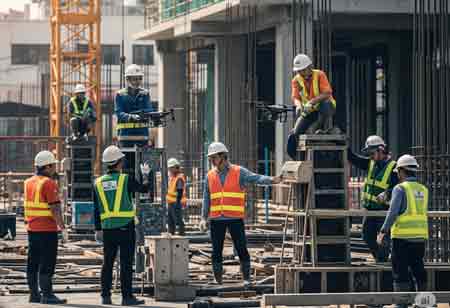Thank you for Subscribing to Construction Business Review Weekly Brief
Specials
- Apartment and Condominium Contractors Canada
- Decking Canada
- Architectural Glass Europe
- MEP APAC
- Construction Saudi Arabia
- German Apartment and Condominium Contractors
- Construction Law APAC
- Outdoor Construction
- Foundation Construction Canada
- MEP Canada
- Kitchen and Bath
- Cold Storage Construction APAC
- Precast Concrete Europe
- Construction Staffing Europe
- Pre-Construction Services
- Flooring System APAC
- Scaffolding Canada
- Swimming Pool Construction Canada
- Construction Management Canada
- Cold Storage Construction Canada
- Flooring Systems Europe
- Residential Construction
- Concrete Canada
- Construction Cladding Europe
- Construction Cladding APAC
- Concretes, Aggregates and Construction Materials APAC
- Concretes, Aggregates and Construction Materials Europe
- Commercial Contractors Europe
- Commercial Contractors APAC
- Dummy
- Construction Insulation, Coating and Waterproofing
- Construction Management APAC
- Landscaping Canada
- Construction Coating Europe
- Construction Tech Startups Europe
- Insulation Services Europe
- Mechanical Contractor Canada
- Mould Remediation and Testing Europe
- Swimming Pool Construction APAC
- Building Sealing Solutions Europe
- Construction Engineering Services
- Mechanical Electrical and Plumbing
- Roofing Systems Europe
- Architectural Glass APAC
- Startups APAC
- Construction Forensic and Owners Representative
- Flooring System
- Waterproofing APAC
- Wall Systems
- Safety and Compliance Europe
- Construction Bidding and Auctions
- Modular and Prefab Construction
- Architectural Glass
- Construction MENA
- Construction Demolition and Recycling Europe
- Modular Construction Europe
- Construction Interiors
- Steel Building APAC
- HVAC
- Doors and windows
- Construction Latam
- Building Information Modeling APAC
- Sustainable Construction APAC
- Building Restoration and Maintenance
- Commercial Contractors
- Specialty Construction
- Construction Engineering Canada
- Construction Engineering MENA
- Modular Construction Canada
- Modular Construction APAC
- Roofing and Siding Systems
- Workforce Management and Staffing
- Roofing Systems APAC
- Construction Consulting
- Steel Building Europe
- Construction Demolition and Recycling APAC
- Safety and Compliance APAC
- Concretes, Aggregates and Construction Materials
- Construction Cladding
Quality Control in Construction: Best Practices for Long-Term Durability in APAC
The APAC construction sector must prioritize quality control to ensure long-term durability, enhance safety, and build trust, fostering sustainable development amid rapid urbanization and growth.

By
Construction Business Review | Monday, June 30, 2025
Stay ahead of the industry with exclusive feature stories on the top companies, expert insights and the latest news delivered straight to your inbox. Subscribe today.
Fremont, CA: The Asia-Pacific (APAC) region is a global hub for construction, with rapid urbanization and infrastructure development driving immense activity. While the pace of growth is exhilarating, ensuring the long-term durability of these structures is paramount. This necessitates a robust commitment to quality control (QC) throughout the construction lifecycle. Effective QC not only mitigates costly rework and enhances safety but also builds lasting trust and safeguards reputations, ultimately contributing to the longevity and resilience of built assets across APAC.
Establishing a Culture of Quality in APAC Construction
To foster a culture of quality and ensure long-term durability in construction across the APAC region, a comprehensive and strategic approach to quality control (QC) is essential. One of the foundational pillars of such an approach is the establishment of clear standards and specifications. These must be defined and communicated at the outset of a project, covering material quality, artistry, regulatory compliance—including both local building codes and international benchmarks such as ISO 9001—and alignment with client expectations. Given the diversity of national standards within the APAC region, harmonizing these expectations across stakeholders is particularly critical.
Implementing Robust Inspection and Training Regimes
Robust material management also plays a central role in ensuring structural integrity. This includes carefully vetting suppliers to verify certifications and ensure compliance with quality requirements, as well as conducting thorough inspections of incoming materials using both destructive and non-destructive testing methods. Effective on-site storage protocols must also be in place to protect materials from damage, degradation, or contamination.
A comprehensive inspection and testing regime must be implemented throughout all phases of the construction process. This begins with pre-construction checks, including site assessments and equipment readiness, and continues through in-process inspections at key milestones such as foundation work, framing, electrical, and plumbing installations. Testing methods—ranging from ultrasonic testing to soil compaction and compressive strength tests—help identify and rectify issues early. Standardized QC checklists and meticulous documentation further ensure consistency, traceability, and accountability throughout the project lifecycle.
Continuous workforce training is another cornerstone of quality assurance. Investing in the ongoing development of personnel—from laborers to project managers—ensures that all team members are well-versed in best practices, evolving regulations, emerging technologies, and quality expectations. In many APAC markets, where skilled labor shortages persist, targeted training and retention initiatives are vital to building a capable workforce.
Effective communication and collaboration across all project stakeholders—owners, general contractors, subcontractors, architects, and engineers—are also crucial. This includes conducting QC kick-off meetings to align objectives and responsibilities, establishing feedback loops for timely issue resolution, and leveraging digital tools to streamline reporting and progress tracking.
Technology serves as a powerful enabler of enhanced QC. Digital solutions such as quality management software help standardize inspections and expedite issue resolution. Building Information Modeling (BIM) enhances design coordination and constructability, while artificial intelligence (AI) and data analytics offer predictive insights that can optimize processes and prevent defects. Digital twin technology further enhances asset management by enabling real-time performance monitoring and predictive maintenance, thereby improving overall asset performance. The growing adoption of prefabrication and modular construction methods also supports quality by allowing more precise manufacturing in controlled environments.
Quality control in construction in the APAC region is not merely a regulatory obligation but a strategic imperative for long-term durability and sustainable development. The emphasis must shift from simply meeting immediate project deadlines to creating a legacy of quality that underpins the region's ambitious growth trajectory.





